Having recently returned from chasing permit in Mexico's Ascension Bay, we've been doing a lot of talking about permit. It's sort of hard to resist. In our recent photography feature, Permit: Your New Addiction, we hopefully helped to dispel the myth that only the most masterful of anglers should hope to land a permit. You can do it too. That said, successfully presenting a fly to a permit and hooking that permit is a distinctly different task than doing so to other fishy quarry -- even the other fish that share the flats with permit -- so being prepared will up your chances for success.
Over the course of a week with the insanely permit-focused guides at Ascension Bay's Palometa Club, we received a lot of schooling on how to best present a fly to a permit feeding on the flats. Here are a few of the tips we received.
Lead Closely
When you've spotted a permit feeding on the flats, your initial strategy is similar to how you'd react to a feeding bonefish: you want your cast to lead the fish. But, while you're leading the fish to avoid hitting it on the head and spooking it, it is important not to lead the fish too far. While you don't want to spook it, you do want it to be able to see -- and possibly hear -- your fly hitting the water in order to draw its attention.
Almost without question, your instinct is going to be to play it safe and lead the fish by a healthy margin, but that's likely to result in little more than the permit simply failing to notice your fly. Stay calm and collected and do your best to make a cast that is sure to get your permit's attention without sending him packing in the process.
To Strip or Not To Strip
The vast, vast majority of your time spent fishing permit will be fishing flies that are intended to imitate a permit's main food source: tiny crabs. So, it stands to reason that your fly should mimic the behavior of these crabs as accurately as possible.
A crab on the flats that fears it has been spotted by a predator will almost invariably do one of two things: 1) nothing or 2) dig in. Both of these options have a common goal, to reduce the chances of being noticed, and both involve a crab that's stopped moving entirely. Since real crabs stop moving when they've been noticed by a permit, so should your fake crab. If a permit turns or rushes over to inspect your fly, don't move it. I know you want to. But don't.
If the fish you're casting to hasn't exhibited behavior to suggest that is interested in your fly, then you need to employ an active approach and take steps to try to generate that interest. Theoretically, your cast has placed your fly in a position where the fish has seen or can see your fly, so the next step is to imitate a crab that is going about its normal business, unaware of your permit.
Strip Sloooowwwwly
The key to stripping a permit crab fly is doing so slowly. Unlike stripping a gotcha or other bonefish fly, which is done so with relatively short and abrupt strips, your permit fly should be stripped with very slow, very long strips. The resulting action of the fly produces one that is similar to the behavior a real crab, crawling slowly along the bottom doing whatever crabs do, unworried and unconcerned about your fish. Shorter, more abrupt strips will result with a fly that swims quickly through the water or is dragged rapidly along the sand, and may very well also result in a spooked permit.
And remember the previous tip. If your slow, long strips call the permit to attention, it is time to stop stripping. Don't let the bonefisherman in your take over and have your fly continue to flee a permit in pursuit. A crab wouldn't do that. If your crab does, it might send your permit fleeing as well.





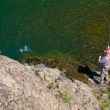





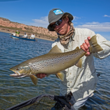








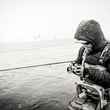




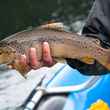
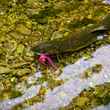

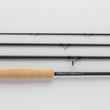

Comments
J. Melzer replied on Permalink
If you are new to Permit be aware that the take can be extremely subtle - just a bump. And in the unlikely event that you do everything right don't blow it by trout setting. Keep the tip down, strip set and hang on.
Pages